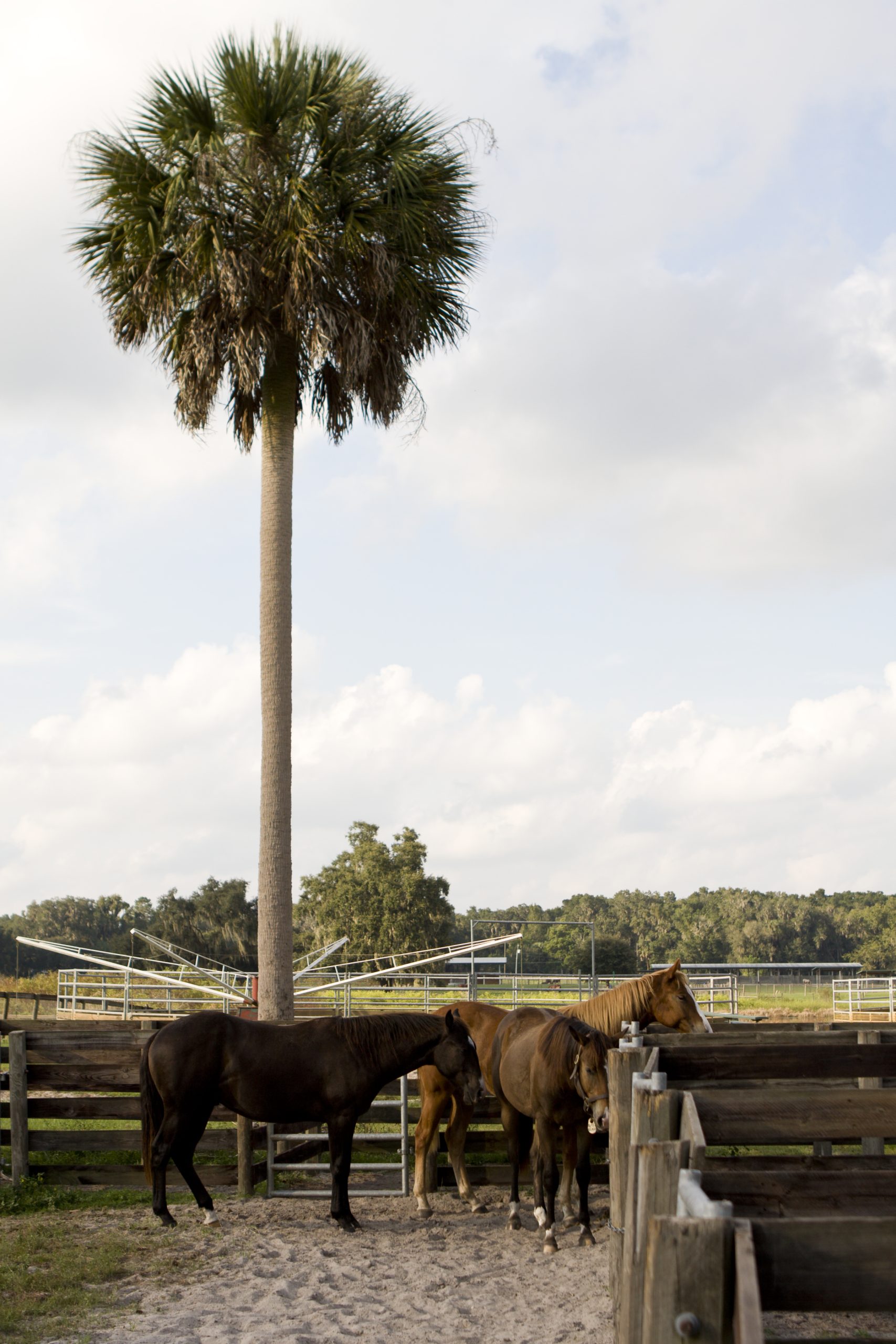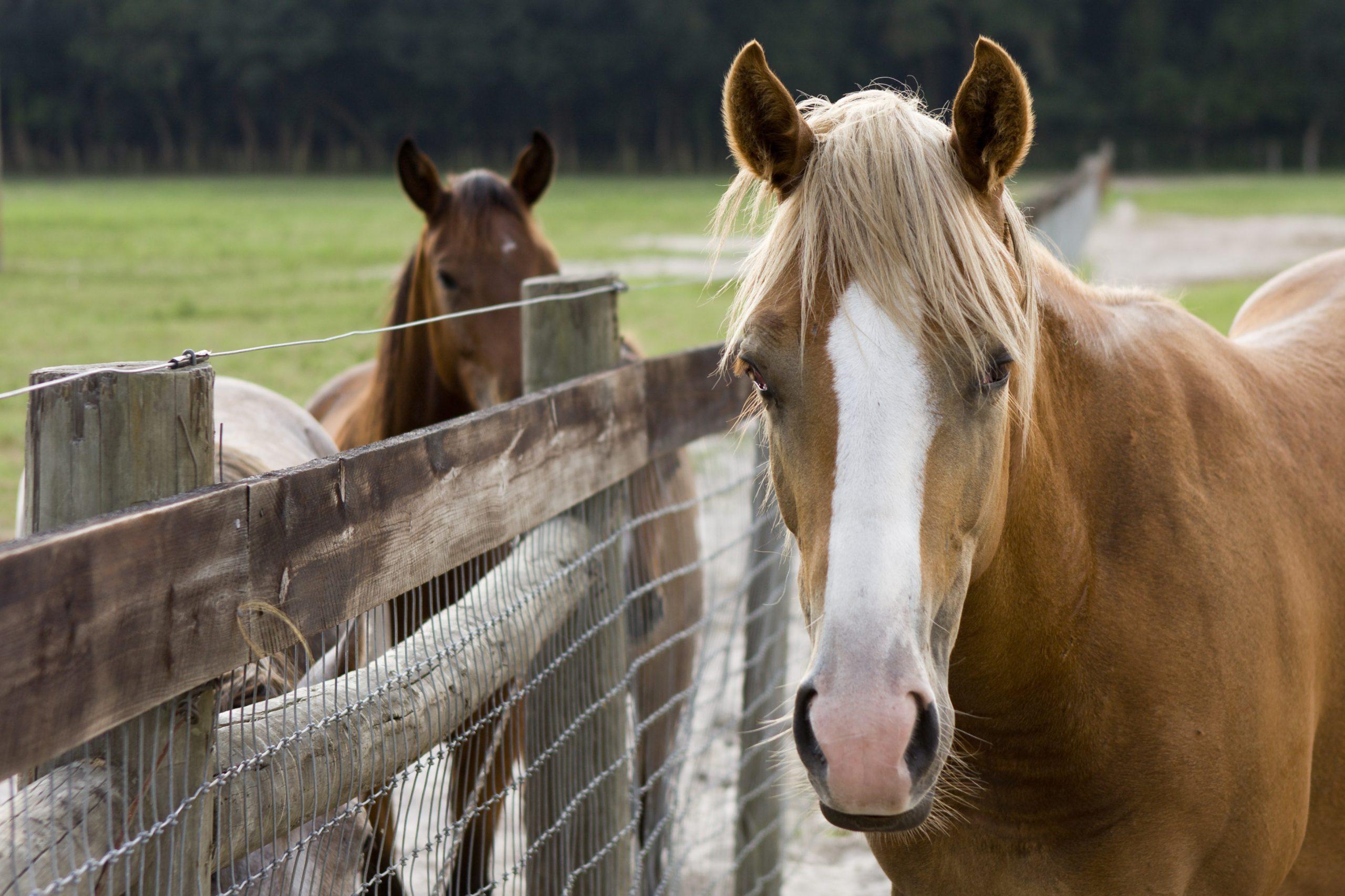Do you love horses and want to give them the best place to roam and graze? If you live in Florida, you’re in luck! The warm weather here is great for growing grass, which is perfect for your horse’s pasture. But even in sunny Florida, you should know a few things to keep your pasture healthy and your horse happy.

Picking the Right Grass
First, let’s talk about the grass. Horses love to munch on grass, so you want to ensure you have the right kind. A soil sample is highly encouraged to see the nutrients in your soil before picking a grass type. In Florida, some of the best grasses for horse pastures are:
Warm-season perennial grasses
- Bahia Grass: This grass is an excellent choice for Florida pastures. It’s low maintenance, meaning it doesn’t need much extra care, and it can survive well even if the weather gets scorching.
- Bermuda Grass: This grass is tough and can handle being grazed by hungry horses. It grows well in Florida’s hot weather and sandy soil. It does have a higher nutrient requirement than Bahia Grass.
- Limpo Grass: This tropical grass grows well on wet soil. It responds very well to fertilization but can be over-grazed; stubble height is best if kept no less than 1 to 10 inches.
Winter annual grasses
- Annual Ryegrass: This cool-season grass grows best in the cooler months. Planting ryegrass in the fall boosts your pasture during the winter when other grasses might slow down.
- Small grains: Oat, rye, and triticale all furnish good grazing during December, January, February, and March if planted between October and November.
Legumes
Legumes are plants that harbor nitrogen-fixing bacteria. They can be planted along with grasses, resulting in higher quality pasture for the horse and a reduction in the amount of nitrogen fertilizer needed to produce the same level of forage production, particularly after the first year.
There are several other options available for grass that have their pros and cons. Also, it is very important to have a soil sample done before picking the suitable grass.
Grazing Rotation: What Is It and Why Is It Important?
Now that you have suitable grass, let’s discuss how to keep it healthy. Horses love to eat, and if they graze on the same patch of grass all the time, they can wear it down until there’s nothing left. That’s where “grazing rotation” comes in. Grazing rotation means dividing your pasture into smaller sections, or “paddocks,” and moving your horses from one paddock to another. This way, while your horses are grazing in one area, the grass in the other sections has time to rest and grow back.

Here’s how you can do it:
- Divide Your Pasture: Use fences to split your pasture into 2-4 paddocks, depending on the size.
- Move Your Horses: Let your horses graze in one paddock until the grass is about 3 inches tall. Then, move them to the next paddock.
- Rest the Grass: Give the grazed paddock a break for a few weeks so the grass can grow back strong.
By rotating your horses like this, you’re helping the grass stay healthy and giving your horses a steady supply of fresh grass.
Keep an Eye on Your Pasture
Even with suitable grass and grazing rotation, keeping an eye on your pasture is essential. Walk around it regularly to check for bare spots where the grass isn’t growing well. If you see any, you might need to plant some new grass seeds or give that area extra time to rest. Also, ensure your horses can access clean water and shelter in each paddock. This keeps them comfortable and ensures they have everything they need.
Conclusion
Taking care of a small horse pasture in Florida isn’t too hard, but it does take some planning. By choosing suitable grass, rotating your grazing areas, taking yearly soil samples, and keeping an eye on your pasture, you can create a healthy and happy home for your horses. Plus, your pasture will stay green and beautiful all year long!
Further reading:
Pastures and Forage Crops for Horses – https://edis.ifas.ufl.edu/publication/AA216
Forage Grasses for Florida’s Organic Soil – https://edis.ifas.ufl.edu/publication/AA255
 0
0
